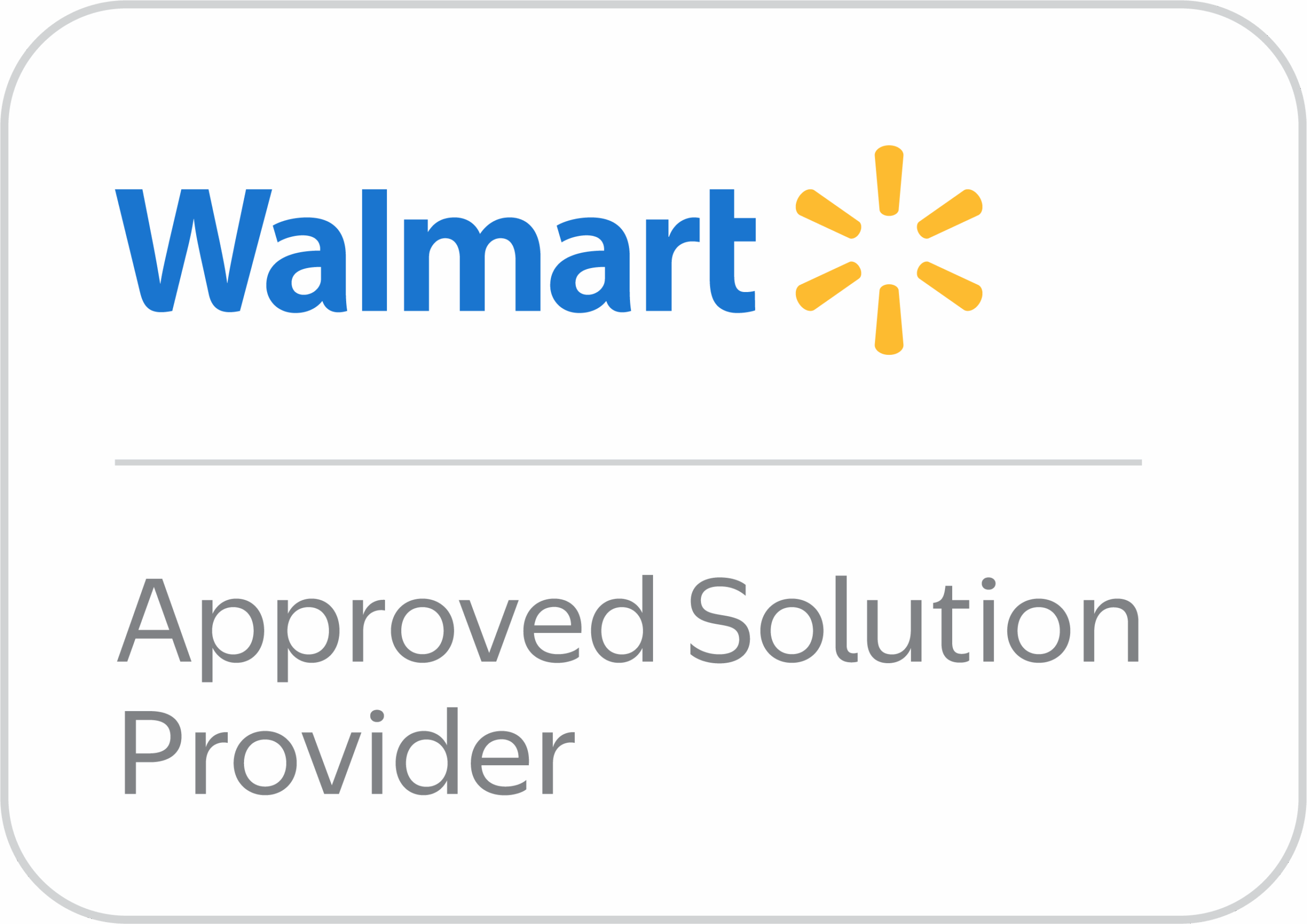Scaling your Amazon FBA business in 2025 requires adapting to new strategies and tools that help optimize sourcing, inventory, marketing, and operations. In this guide, we’ll explore actionable methods that can help you grow your business efficiently while navigating Amazon’s evolving marketplace.
1. Master Advanced Sourcing Techniques
Sourcing plays a vital role in determining the profitability of your Amazon FBA business. In 2025, advanced sourcing techniques enable you to find products at the best prices and ensure they have demand in the market. Let’s explore how you can make smarter sourcing decisions.
Reverse Sourcing (Storefront Stalking)
Reverse sourcing involves analyzing successful competitors’ Amazon listings to identify their best-selling products. Once you’ve identified popular products, source them at lower costs from retail or wholesale suppliers like Walmart or Target. This method leverages proven demand, reducing the guesswork involved in product selection.
For example, if you see a product with high sales on Amazon, you can search for it on retail sites or wholesalers and potentially purchase it at a discount, thus increasing your margin. This method is particularly useful when entering a niche with well-established demand.
Use Deal Lists and Communities
Another effective sourcing strategy involves tapping into curated online arbitrage (OA) lead lists and seller communities. These sources provide product leads that are handpicked for profitability and demand. Always verify the product’s competition and profitability before purchasing, as some leads may not yield the expected returns.
Example:
You may join online arbitrage communities such as Facebook Groups or Reddit’s FBA-focused subreddits, where sellers share profitable product leads and deal lists for specific categories.
2. Optimize Inventory and Cash Flow Management
Effective inventory and cash flow management are key to maintaining a profitable Amazon FBA business. By implementing efficient inventory systems and building strong relationships with suppliers, you can avoid stockouts, reduce overhead, and free up cash for reinvestment in growth.
Build Strong Supplier Relationships
Establishing and nurturing strong relationships with your suppliers can have a significant impact on your cash flow. By negotiating extended payment terms—such as 60-90 days—you can reduce upfront costs and free up cash for reinvestment in your Amazon FBA business.
For instance, if your supplier offers net-60 payment terms, you can sell the product before paying for it, which allows you to reinvest that cash into new inventory.
Use Advanced Inventory Tools
Use inventory management tools like InventoryLab or SoStocked to forecast demand and optimize reorder points. These tools can help you avoid costly stockouts and overstocking, which are particularly important during peak shopping seasons like Prime Day or the Holiday Season.
Strategic Seasonal Planning
Adjust your inventory based on the seasonal nature of your products. For example, giftable items should be stocked well ahead of the holiday season, while slow-moving stock can be reduced to minimize storage fees. Keep a close eye on Amazon’s FBA storage fee schedule, which typically increases during Q4 (the peak holiday shopping period).
3. Enhance Marketing and Advertising
Increased competition on Amazon means that simply having a great product is no longer enough. To scale your FBA business, you need to optimize your marketing efforts and drive more traffic to your listings. Here, we’ll look at strategies to leverage AI and other marketing tools for improved ROI and brand visibility.
AI-Optimized Advertising
In 2025, AI-driven tools can help Amazon FBA sellers optimize their Pay-Per-Click (PPC) advertising campaigns. Tools like Helium 10’s ADS or Jungle Scout’s PPC manager use machine learning algorithms to automatically adjust bids, optimize keywords, and manage budgets, ultimately improving return on ad spend (ROAS).
For example, using AI to analyze keyword performance will allow you to allocate more budget to high-converting keywords while pausing ads for keywords that are not performing well.
Experiment with Creatives
Constantly test different creatives—such as product images, ad headlines, and messaging—to improve click-through rates (CTR) and conversions. Tools like Canva and Photoshop can help you design professional creatives that resonate with your target audience.
Utilize External Traffic
Drive traffic from platforms outside Amazon to boost sales velocity and organic ranking. For example, running Instagram ads or collaborating with influencers can bring in external customers who are likely to convert on Amazon.
Example:
Collaborating with an influencer who posts a TikTok unboxing of your product can help create a surge of traffic to your Amazon listing, improving its ranking and visibility on Amazon.
4. Expand Product Catalog and Diversify Sales Channels
Expanding your product catalog and selling on multiple platforms can increase your sales and reduce reliance on Amazon alone. In this section, we’ll cover how to add complementary products, incorporate hybrid fulfillment models, and diversify your revenue streams through multi-channel selling.
Add Complementary Products
Once your initial product gains traction, expand your catalog by adding complementary items in the same niche. This could include accessories, related products, or upgraded versions of your best sellers. This not only increases your Average Order Value (AOV) but also attracts repeat customers who are looking for related products.
For example, if you sell running shoes, you could expand your catalog to include athletic socks, water bottles, or running shorts.
Hybrid Fulfillment Models
Mix Fulfillment by Amazon (FBA) with Fulfillment by Merchant (FBM) for more flexibility and cost management. FBM allows you to fulfill orders directly from your own warehouse or a third-party logistics provider, which can be more cost-effective for certain products or regions.
Multi-Channel Selling
Don’t limit your sales to just Amazon. Sell your products on other platforms such as Walmart Marketplace, Shopify, or eBay to reduce dependency on Amazon and diversify your revenue streams. This can help mitigate risks and broaden your customer base.
5. Utilize Pricing and Listing Optimization Tools
The right pricing strategy and optimized listings can make a significant difference in your Amazon FBA success. Here, we’ll discuss how to use dynamic pricing tools and regularly update your product listings to align with Amazon’s algorithm and search trends, driving more visibility and sales.
Dynamic Pricing Tools
Use dynamic pricing tools like Profasee to adjust prices based on real-time market conditions, including competitor prices, demand fluctuations, and sales volume. This ensures you remain competitive while maximizing profit margins.
Optimize Listings for AI and Search
Regularly update your product titles, bullet points, and descriptions with relevant keywords that align with Amazon’s algorithm. This is crucial as Amazon’s algorithm increasingly relies on AI to rank products based on search relevance and customer behavior.
6. Consider Brand Acquisition and Long-Term Growth
If launching new products seems challenging or time-consuming, consider acquiring established brands. Acquiring a brand allows you to bypass the initial growth phase and immediately benefit from an existing customer base and brand recognition. This can fast-track profitability, especially if the brand has a loyal following and a proven product-market fit.
7. Invest in Automation and Outsourcing
As your business grows, manual tasks become overwhelming. Investing in automation tools and outsourcing key operations can free up time for you to focus on strategy and growth. In this section, we’ll look at how automation and outsourcing can help streamline your operations and maximize efficiency.
Automation Tools
Investing in automation tools can help streamline tasks such as repricing, inventory alerts, and PPC management. RepricerExpress and RestockPro are popular tools that automate pricing and inventory management across multiple platforms, saving time and reducing human error.
Outsourcing
As your business grows, consider outsourcing operational tasks such as order prep, customer service, and product research. Hiring virtual assistants or using prep centers can free up your time to focus on scaling strategies.
Why Scaling Your Amazon FBA Business Matters
Scaling yourAmazon FBA business is not just about increasing sales-it’s about building a sustainable, profitable brand that can thrive in a highly competitive marketplace. Here’s why scaling matters:
Maximize Profit Potential
Scaling helps you take advantage of economies of scale, reducing per-unit costs and improving margins. As your business grows, you can negotiate better prices with suppliers, which boosts profitability.
Build Brand Authority and Customer Loyalty
Expanding your product catalog and improving your listings establishes your brand as a trusted authority. A strong brand attracts repeat customers, reduces reliance on paid ads, and improves organic rankings.
Mitigate Risks
Scaling diversifies your product offering and sales channels, reducing dependence on a single product or platform. This helps you adapt to changes in Amazon’s policies or market trends, ensuring long-term stability.
Stay Competitive
Scaling your business allows you to invest in marketing, technology, and product innovation to stay ahead of the competition. Larger sellers also have better access to premium Amazon programs and features like Amazon Brand Registry and A+ Content.
Create Long-Term Business Value
A well-managed, scaled Amazon FBA business is a valuable asset. Whether you want to sell it, attract investors, or expand into other markets, growth creates opportunities for brand acquisitions, private label expansion, and multi-channel retailing.
Challenges of Scaling Amazon FBA in 2025
Amazon FBA sellers face several significant challenges in 2025 that impact profitability, operations, and growth potential. Understanding these challenges is crucial for adapting strategies and maintaining a competitive edge.
Rising Fees and Storage Costs
Amazon continues to raise FBA fulfillment fees, including per-unit costs for picking, packing, and shipping, especially during peak seasons like Q4. Additionally, storage fees are becoming more dynamic, with higher charges for slow-moving inventory.
Stricter Compliance and Policy Updates
Amazon has introduced more rigorous compliance standards, such as mandatory 365-day supply chain documentation. Non-compliance can lead to account suspensions or listing removals, making it essential to stay up-to-date with Amazon’s evolving policies.
Increasing Competition and Market Saturation
With millions of active sellers, the Amazon marketplace is more competitive than ever. Sellers must differentiate themselves through strong branding, unique products, and targeted marketing to stay ahead.
Operational Complexity and Documentation Burden
New documentation requirements, including anti-counterfeit measures and supply chain transparency, have increased administrative workloads, making it crucial to stay organized.
Rising Customer Expectations
With the rise of AI, automation, and emerging technologies like augmented reality, customer expectations continue to rise. Sellers must leverage these technologies to improve customer experience and stay competitive.
Conclusion
Scaling an Amazon FBA business is an exciting yet challenging endeavor that requires a strategic approach to sourcing, inventory management, marketing, and operational efficiency. By following these key strategies and adapting to the changing Amazon landscape, you can maximize your growth potential and build a thriving, long-term business.
Ready to scale your business with the right tools? Whether you’re looking to optimize your listings, master PPC campaigns, or get into advanced sourcing, ZonHack can help. Explore ZonHack’s features to get the insights you need to drive success in 2025 and beyond. Don’t wait – start scaling today!




